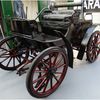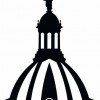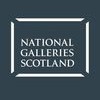
Explore 14,000 years of rural and small-town life in Upper Clydesdale. Discover the people who have lived and worked here from prehistoric times up to the mid-20th century. Alexander Moffat, Ruth Nicol and Alan Riach introduce their paintings and poems and Hugh MacDiarmid's Brownsbank years, 1951-1978.
Free Entry but donations to MacDiarmid's Brownsbank. A public talk with Beth Junor, editor of The Letters of Valda Grieve (Edinburgh: Word Power Books, 2007), and the artists, Alexander Moffat, Ruth Nicol. Biggar Museum Trust aims to collect, store, preserve and record Biggar and Upper Clydesdale's rich archaeological, social and historic heritage.
Free Entry but donations to MacDiarmid's Brownsbank. A public talk with Beth Junor, editor of The Letters of Valda Grieve (Edinburgh: Word Power Books, 2007), and the artists, Alexander Moffat, Ruth Nicol. Biggar Museum Trust aims to collect, store, preserve and record Biggar and Upper Clydesdale's rich archaeological, social and historic heritage.
Services
Visit Us
Report
Visit Biggar Museum and you'll be surprised by how much "bigger" it is on the inside! The museum's modest exterior hides extensive collections spanning 14,000 years of rural life in Biggar and Upper Clydesdale. Described by one Trip Advisor reviewer as "a small museum packing a mighty punch" you can expect your visit to be an extra special one.
Plan Your Visit
Report
By Car: Biggar is on the A702, 30 miles southwest of Edinburgh and 10 miles southeast of Lanark. From the south, Biggar is 15 minutes from the M74 junction 13 at Abington. Groups, of any age, are welcomed and can make an appointment to visit out-with the usual opening hours. We can assist those bringing children's groups (Scouts, Out-of-School, Care Groups), youth groups, community groups and older adults such as those from care homes.
Scotland’s Earliest People
Report
The oldest open-air site in Scotland was discovered by archaeologists in Howburn, near Biggar. It dates to the last phases of the last glacial period, the Devensian Epoch, and provides insight into the lives of Late Upper Palaeolithic hunters. This report from Biggar Archaeology Group describes the site and its many finds.
Neolithic Farmers
Report
Neolithic Farmers made & used a variety of tools including arrowheads which were fixed to the end of a shaft & fired from long narrow bows. Axeheads were inserted into a hole in a wooden shaft. They were used for practical purposes such as clearing land for farming or to chop down trees to use for building.
C17 Upland Farmers
Report
Bastle houses (fortified farmhouses) are a fascinating historic feature of the borders area and were used by farmers to provide security against border reivers (raiders). Five bastle houses in Upper Clydesdale and surrounds have been excavated by member of Biggar Archaeology Group. Windgate House was the first bastle house to be excavated in Scotland.
Reviews

Be the first to review Biggar Museum Trust.
Write a Review
